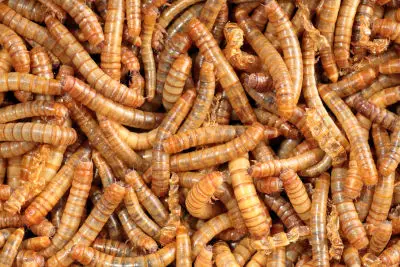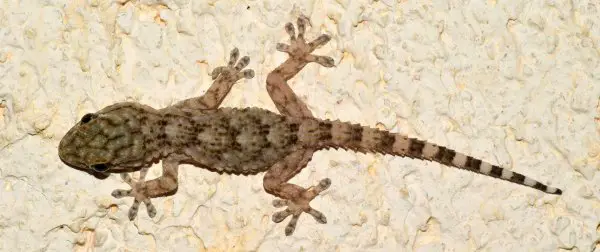Why Do Lizards Fall from the Ceiling? Explained
Lizards are fascinating creatures that can be found in various habitats across the world. These reptiles are known for their incredible ability to climb walls and ceilings, but have you ever wondered why they sometimes fall from the ceiling? While it may seem like a simple question, the answer is actually quite complex and involves several factors.
One of the main reasons lizards fall from the ceiling is due to their reliance on adhesion. Lizards use specialized toe pads to stick to surfaces and climb walls and ceilings. However, these toe pads can become less effective if they get dirty or wet, making it more difficult for lizards to maintain their grip. Additionally, if the surface they are climbing on is too smooth or slippery, lizards may struggle to hold on and end up falling.
| Are these foods dangerous for your Beardie? | |
| Avacado? Click here to learn, from this guide, if this food is dangerous |  |
| Superworms? Click here to learn, from this guide, if this food is dangerous |  |
Lizard Behavior and Ceiling Dwelling

A Tarentola Wall Gecko lizard walking on a wall.
Adaptations for Climbing
Lizards are known for their remarkable climbing abilities, which are aided by several adaptations. For instance, their long, slender bodies allow them to navigate tight spaces and squeeze into crevices. Additionally, their sharp claws and sticky toe pads enable them to cling to various surfaces with ease, including walls and ceilings.
Some species of lizards have evolved specialized adaptations for arboreal habitats, such as prehensile tails that can grasp onto branches and other objects. These adaptations allow them to move with agility and precision in their environment, which includes scaling walls and ceilings.
Territorial and Mating Behaviors
Lizards are also known for their territorial and mating behaviors, which can lead to falls from ceilings. Male lizards often engage in territorial disputes, which involve aggressive displays and physical combat. During these interactions, lizards may inadvertently fall from their perches on walls and ceilings.
Mating behaviors can also lead to falls. Male lizards may court females by performing elaborate displays, such as head-bobbing and tail-waving. These displays can distract the male from his surroundings, leading to a fall from a high perch.
In conclusion, lizards’ adaptations for climbing and their territorial and mating behaviors can explain why they sometimes fall from ceilings. By understanding these behaviors, we can better appreciate the remarkable abilities of these fascinating creatures.
Causes of Falling
https://www.youtube.com/watch?v=Xr2rOjEpLKQ&embed=true
Environmental Factors
Lizards are known for their ability to climb walls and ceilings, but sometimes they fall due to environmental factors. For instance, lizards may fall from the ceiling when the surface they are clinging onto is wet or slippery. Rainwater or condensation can make surfaces slippery, causing lizards to lose their grip and fall. Similarly, lizards may fall when the temperature is too hot or too cold. Extreme temperatures can affect a lizard’s ability to grip onto surfaces, leading to falls.
Physical Exhaustion
Lizards are active animals and spend a lot of their time climbing and moving around. When they become physically exhausted, they may lose their grip and fall. This is particularly true for younger lizards that are still developing their strength and stamina. Additionally, lizards that are sick or injured may be more prone to falling due to physical weakness.
Predator Evasion
Lizards are prey animals and are constantly on the lookout for predators. When they sense danger, they may jump or fall from the ceiling as a way to evade their predators. This behavior is known as “drop and run” and is a common survival tactic among many lizard species.
In conclusion, there are various reasons why lizards fall from the ceiling. Environmental factors, physical exhaustion, and predator evasion are some of the most common causes. By understanding these causes, we can better appreciate the challenges that lizards face in their natural habitats.
Impact of Falling on Lizards
Survival Rate
Lizards falling from the ceiling can have a significant impact on their survival rate. The height of the fall and the surface they land on can determine whether they survive or not. Some species of lizards have a better chance of surviving a fall due to their ability to glide or parachute, but others may not be so lucky.
Studies have shown that lizards that fall from a height of more than 20 feet have a lower chance of survival. This is because the impact of the fall can cause internal injuries, including organ damage, which can be fatal. Lizards that fall on hard surfaces such as concrete or asphalt are also less likely to survive due to the severity of the impact.
Injury Risk
Lizards that survive a fall may still be at risk of injury. The impact of the fall can cause fractures, dislocations, and soft tissue injuries. These injuries can affect the lizard’s ability to move, hunt, and defend itself.
In addition to physical injuries, lizards may also experience psychological trauma from the fall. The stress of the fall can cause anxiety and fear, which can affect the lizard’s behavior and overall health.
Overall, falling from the ceiling can have a significant impact on a lizard’s survival and well-being. It is important to take precautions to prevent lizards from falling, such as installing screens or barriers in areas where they are likely to climb.
Preventive Measures and Human Interaction
Habitat Modification
One of the most effective ways to prevent lizards from falling from the ceiling is by modifying their habitat. Lizards are often found in warm, humid environments with plenty of hiding spots. Homeowners can reduce the likelihood of lizards entering their homes by sealing any cracks or gaps in the walls, windows, and doors. This will prevent lizards from entering the house in search of food or shelter.
Additionally, homeowners can reduce the humidity in their homes by using dehumidifiers or air conditioning units. This will make the indoor environment less hospitable for lizards, reducing the likelihood of them entering the home.
Human Intervention
If lizards are already present in the home, there are several ways to remove them without harming them. Homeowners can use humane traps to catch the lizards and release them outside. Alternatively, they can use a broom or other long-handled tool to gently guide the lizard out of the house.
It is important to note that killing or harming lizards is not an effective or humane way to deal with them. Lizards play an important role in the ecosystem and help control insect populations. Therefore, it is important to treat them with respect and care.
In conclusion, preventing lizards from falling from the ceiling requires a combination of habitat modification and humane human intervention. By taking these steps, homeowners can reduce the likelihood of lizards entering their homes and ensure the safety and well-being of these fascinating creatures.